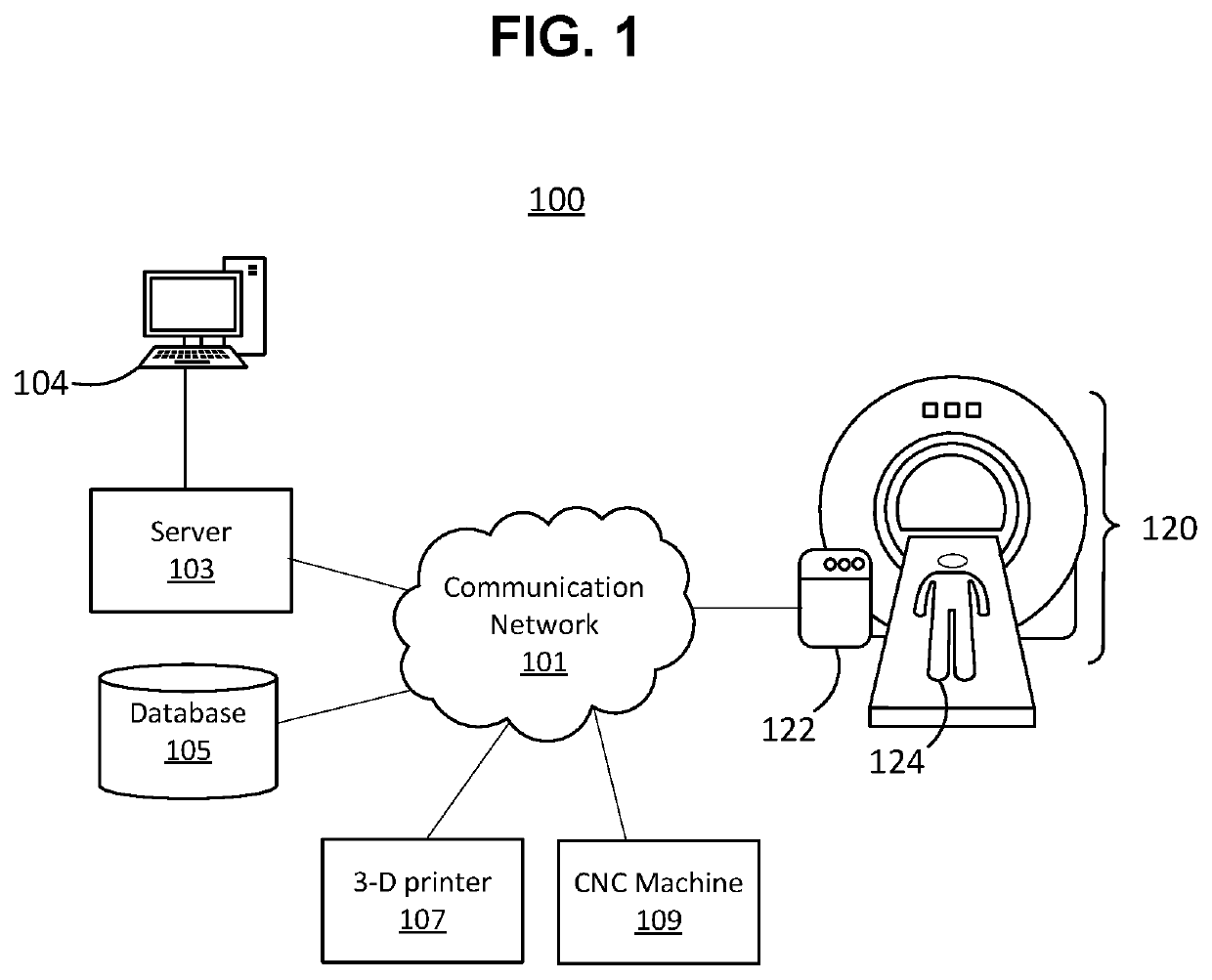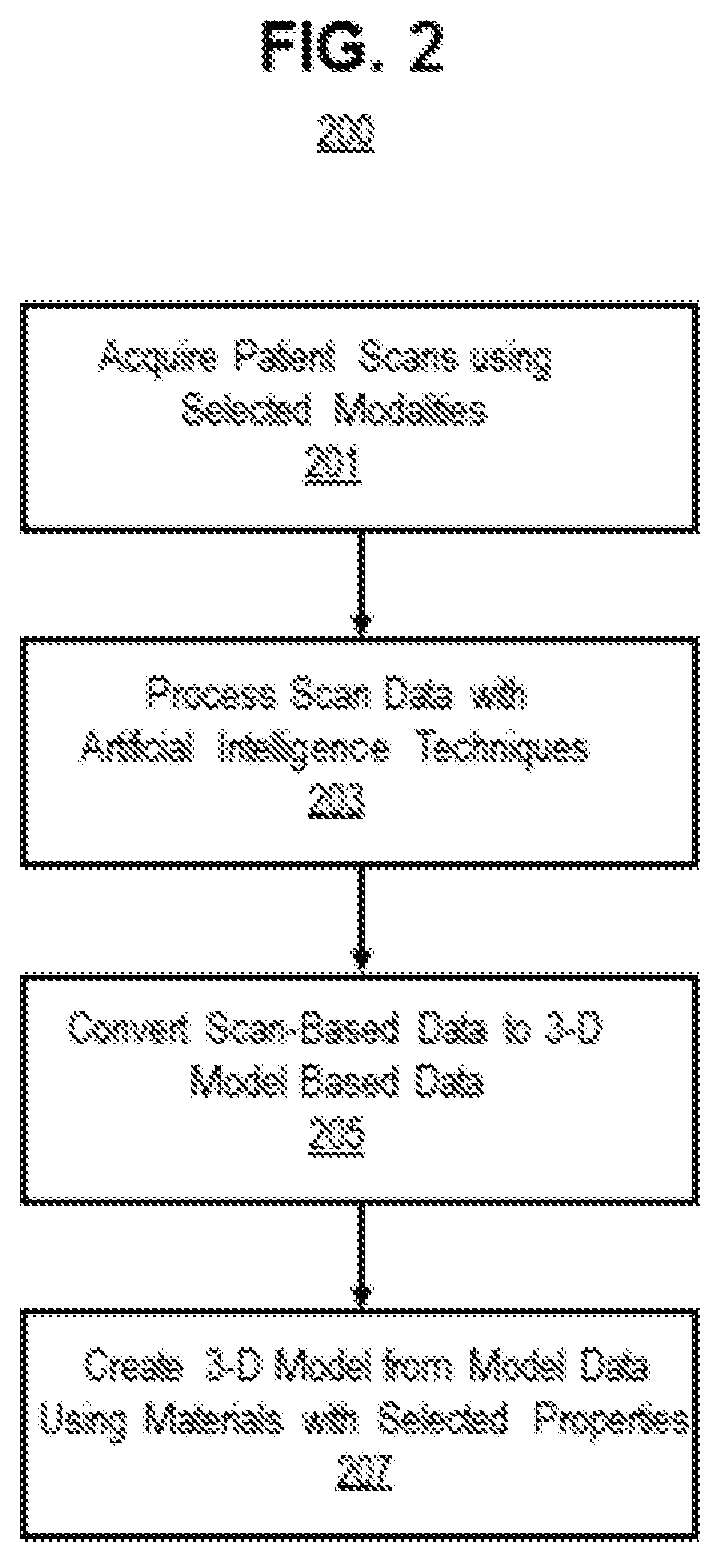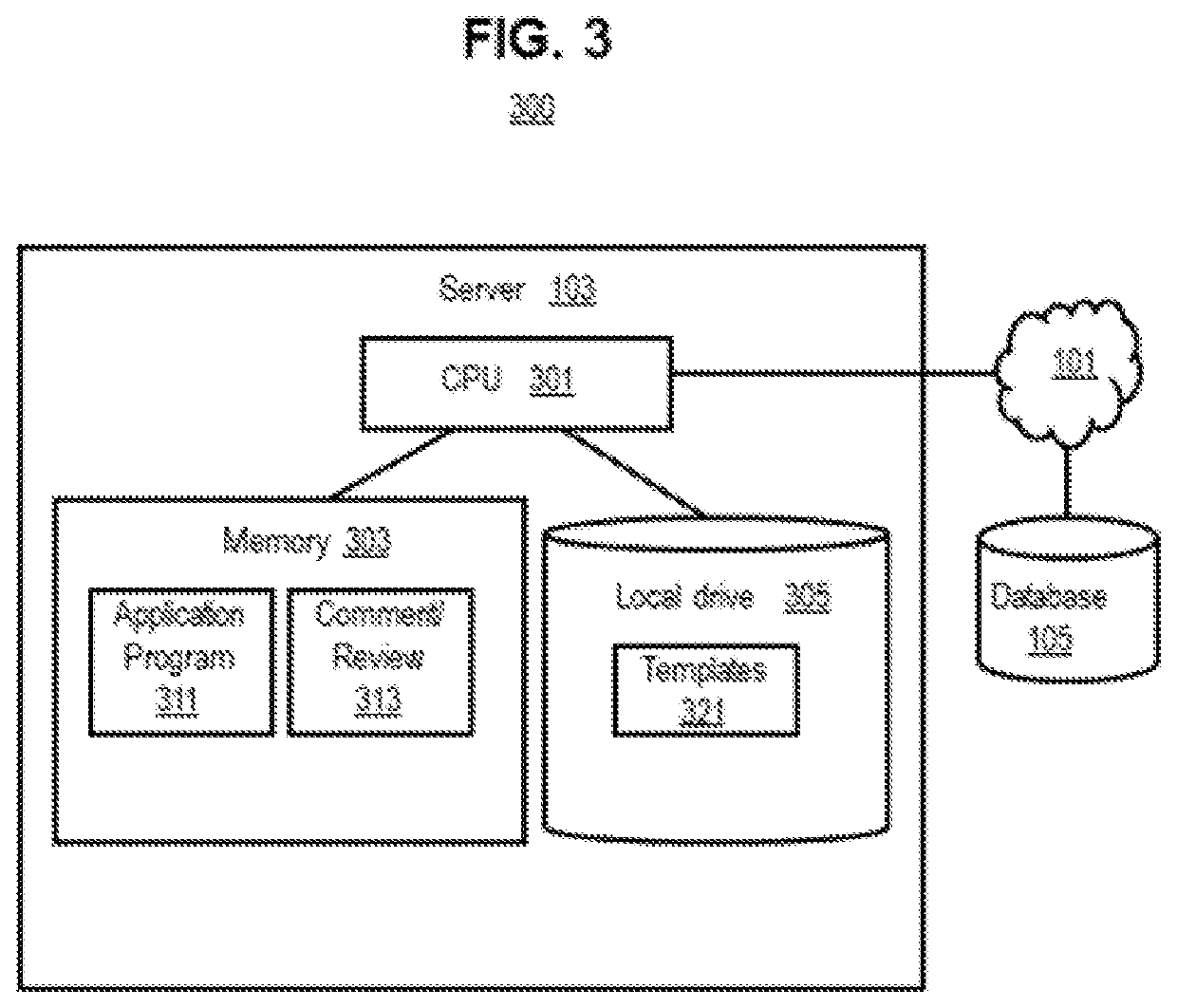System and method for mechanical fastening designs
a technology of mechanical fastening and design, applied in the field of system and method of mechanical fastening design, can solve the problems of distortion of the visualized structure, difficulty in visualizing the internal structure, and inability to achieve accurate and detailed results
- Summary
- Abstract
- Description
- Claims
- Application Information
AI Technical Summary
Benefits of technology
Problems solved by technology
Method used
Image
Examples
Embodiment Construction
[0026]FIG. 1 illustrates a system 100 to design a patient-specific medical model. System 100 includes an MRI machine 120, illustrated as accommodating a patient 124 laying on a gurney and about to undergo MRI examination. MRI machine 120 may include a local control console 122, by which the local operation of MRI machine 120 may be controlled. For example, at local control console 122, an MRI operator (not shown) may control local operation such as movement of the patient gurney to move patient 124 into and out of MRI machine 120, starting and stopping other functions or operating modes of MRI machine 120, etc. Although FIG. 1 illustrates MRI machine 120 as the modality, other modalities such as a CT machine are contemplated as being compatible with system 100.
[0027]MRI machine 120 communicatively interfaces with a communication network 101. Communication network 101 may include, e.g., at least a portion of an Ethernet network, the design of which is well known to persons of skill i...
PUM
 Login to View More
Login to View More Abstract
Description
Claims
Application Information
 Login to View More
Login to View More - R&D
- Intellectual Property
- Life Sciences
- Materials
- Tech Scout
- Unparalleled Data Quality
- Higher Quality Content
- 60% Fewer Hallucinations
Browse by: Latest US Patents, China's latest patents, Technical Efficacy Thesaurus, Application Domain, Technology Topic, Popular Technical Reports.
© 2025 PatSnap. All rights reserved.Legal|Privacy policy|Modern Slavery Act Transparency Statement|Sitemap|About US| Contact US: help@patsnap.com



